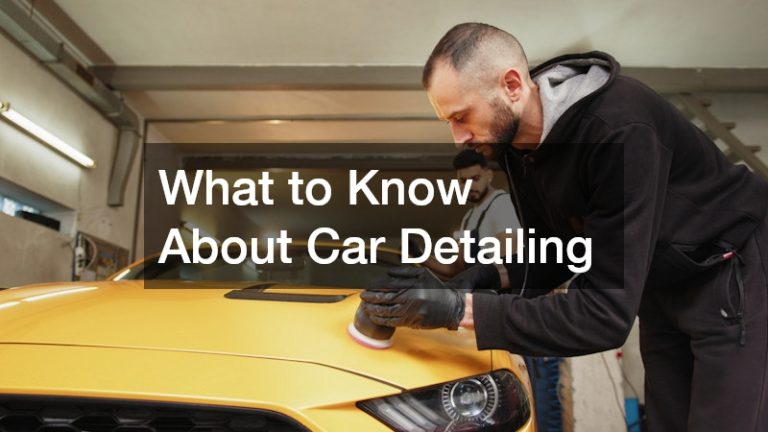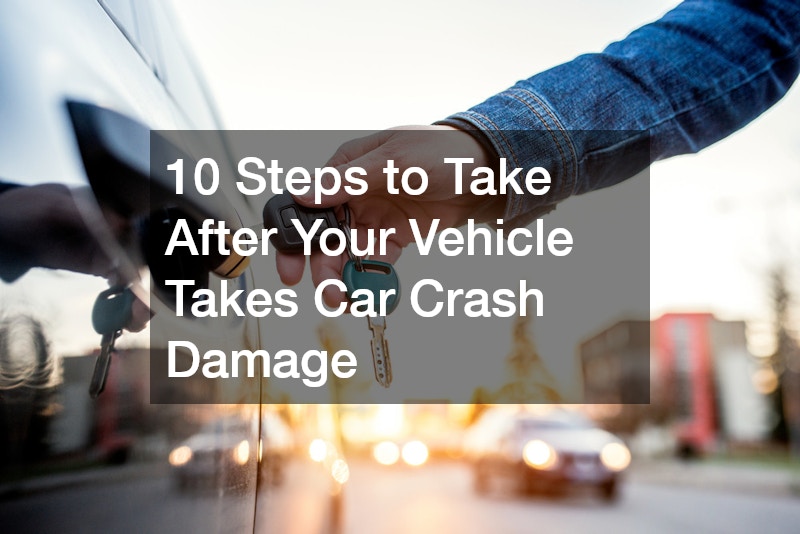
Every day, individuals across the globe find themselves involved in car accidents, each varying in severity and consequence. Understanding how to effectively manage the aftermath of a car crash is vital to both protecting oneself legally and ensuring timely repair of any car crash damage sustained. This article aims to provide a comprehensive guide, equipped with practical steps for dealing with the unfortunate event of an auto accident. Whether it is ensuring that you have all necessary legal documentation, coordinating with roadside assistance services, or arranging repairs at an auto body repair shop, this guide will cover essential actions to take at each stage following an accident. Car crash damage not only impacts one’s vehicle but can also strain one’s mental and financial resources, which is why being prepared with information on local towing services and knowing what details to gather at the scene can be crucial. Let us delve into the specifics to arm you with the knowledge needed to navigate these challenging situations adeptly.
1. Don’t Leave the Scene of the Accident
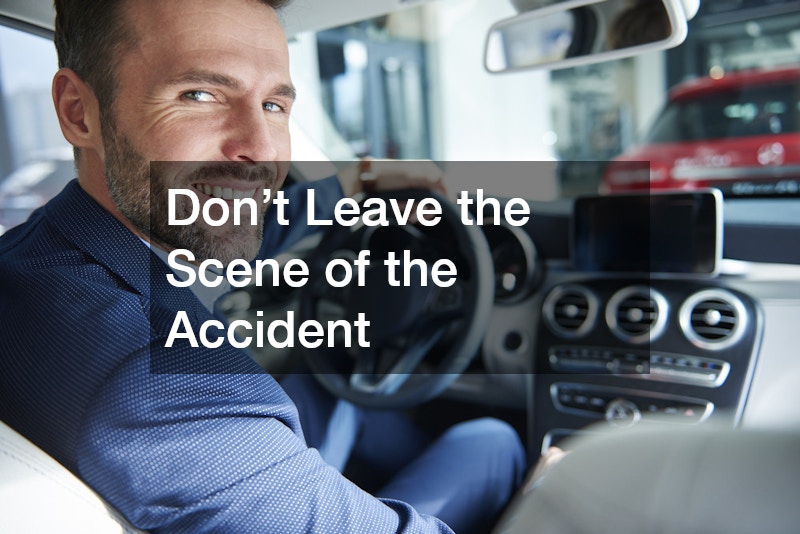
One of the cardinal rules when involved in an auto accident is to remain at the scene. Leaving prematurely can lead to legal consequences, including charges of hit-and-run, even if the damage appears minor. Instead, ensure everyone’s safety and call for a roadside assistance service if mobility is impaired or assistance is needed.
Remaining at the scene allows for accurate documentation of car crash damage and provides an opportunity to gather essential information from all parties involved. It helps in creating an official record that can be crucial for insurance claims. Leaving the scene can also create a scenario where you forfeit your opportunity to advocate for yourself accurately.
In cases where the damages might seem superficial, later inspection might reveal more costly issues, such as auto dent repair, that can inflate repair costs. Therefore, staying put reduces future headaches and clearly establishes the chain of events through the proper channels, such as police involvement, if necessary.
Staying at the scene also allows you to cooperate with law enforcement if they arrive, providing accurate accounts of the events leading to the accident. Police officers can document the car crash damage officially, creating a report that will be critical for insurance claims and any potential legal proceedings. Additionally, being present ensures that you can guide roadside assistance service personnel to your exact location, reducing delays in towing or emergency aid. This proactive presence helps maintain clarity and control over the situation, ultimately protecting your rights and preventing complications that could arise if details are missed or misrepresented after leaving the scene.
2. Gather Witness Statements and Contact Details
Gathering witness statements at the scene helps create a well-rounded narrative of the incident. Bystanders can sometimes serve as unbiased parties who provide an account that underscores your version of events. Be sure to ask for their contact details, as an auto accident attorney might want to reach out should the need for testimonies arise later.
Take this opportunity to photograph the car crash damage and any relevant signs or traffic signals that might have played a role. Such documentation can be pivotal in forming a compelling case with insurance companies or in court. Visual evidence often carries significant weight when establishing fault or defending your standing.
Ensuring meticulous documentation helps mitigate disputes on responsibility and verifies the extent of car crash damage, potentially aiding in smoother negotiations for coverage or settlements with your accident lawyers. A detailed account might also speed up proceedings, removing unnecessary hurdles that can arise from an incomplete compilation of details.
3. Avoid Admitting Fault at the Scene
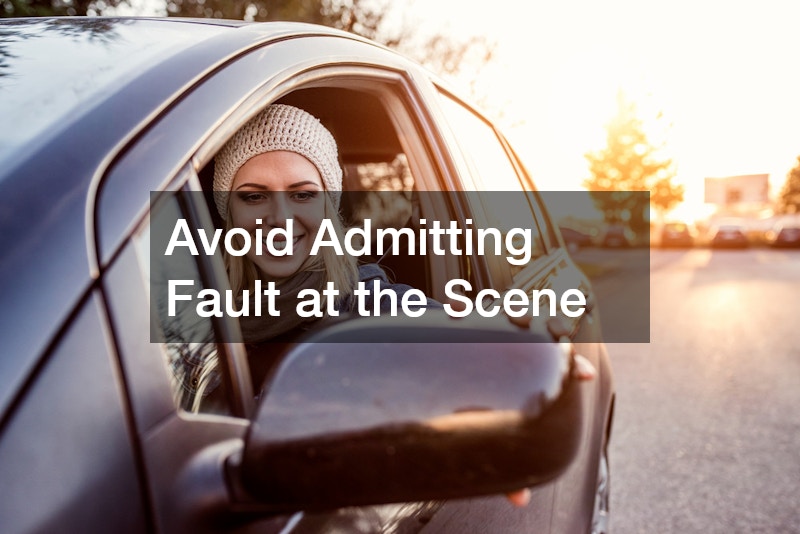
In the immediate aftermath of a collision, emotions and adrenaline may cloud rational judgment, leading individuals to prematurely admit fault. It is crucial, however, to remain measured and refrain from making any statements that might imply culpability without having a complete picture. This is a golden rule emphasized by accident lawyers.
Old habits, such as apologizing, may instinctively kick in, but such utterances can later be used as acknowledgments of responsibility. Instead, focus on communicating with parties, only focusing on the exchange of vital contact and insurance information, and gauging the extent of car crash damage. It’s better to reserve discussions of responsibility for your insurance provider and legal representation after a full assessment of the incident.
In situations where clarity on accountability is lacking, accident lawyers recommend capturing witness statements and photographs as discussed and opting not to offer opinions on liability. Professional invocations, such as police intervention and insurance investigators, are better equipped to analyze and conclude on matters of fault post-event.
Remaining neutral at the scene also protects you from unintended liability when insurance adjusters review the accident later. Casual remarks or gestures of apology, even if meant politely, can be interpreted as admissions of fault. By sticking to factual observations—such as noting the car crash damage, road conditions, and weather—you maintain an objective record of events. This approach not only strengthens your position with accident lawyers but also ensures that statements given to insurance companies or law enforcement are accurate and defensible, reducing the risk of disputes over responsibility.
4. Keep Copies of All Accident-Related Documents
The compilation of accident-related documents, including police reports, medical records, and witness statements, serves as a fundamental element of your post-accident process. Such documents foster transparent communication with insurance providers and lay the groundwork for any legal proceedings that might emerge.
Storing detailed documentation can influence the expeditious processing of insurance claims and repair estimates. Insurers tend to view cohesive representations of an accident, where car crash damage is correlated with accompanying testimonies and visuals, favorably. This level of preparedness can smooth out claims processes considerably.
Make duplicates wherever possible, safeguarding such documents both physically and digitally to protect against loss or damage. These files support not only repair negotiations from auto body repair shops but also outline the narrative for accident lawyers in case of disputes, thereby saving time and resources.
5. Collect Video Evidence if Possible
In this technology-rich era, video evidence can underscore the validity of your claims more effectively than witness testimony alone. Acquiring footage from police video equipment, dashcams, or mobile devices presents a factual landscape of the accident, offering clarity on car crash damage.
Video proof often captures nuances missed by the naked eye and enhances your substantiation for insurance claims and legal pursuits. Ensuring the viability of technology in your vehicle, such as a consistently recording dashcam, can prove advantageous during disputes.
In addition to supporting your position, video evidence constitutes an impartial account of the incident as relayed by mechanical eyes, thus solidifying claims against exaggerated or false allegations. Employing such technology provides an unbiased, verifiable perspective that transcends subjective accounts.
When collecting video evidence, it’s important to act quickly, as footage from traffic cameras or private security systems may be overwritten after a short period. Ask nearby businesses or local authorities if they have recordings of the incident, and make copies or request official preservation if possible. Even short clips from dashcams or bystanders’ phones can clearly show the sequence of events, contributing to an accurate depiction of car crash damage and helping both insurance providers and accident lawyers evaluate the situation more effectively.
6. Arrange for a Tow Truck if the Vehicle Can’t Be Driven
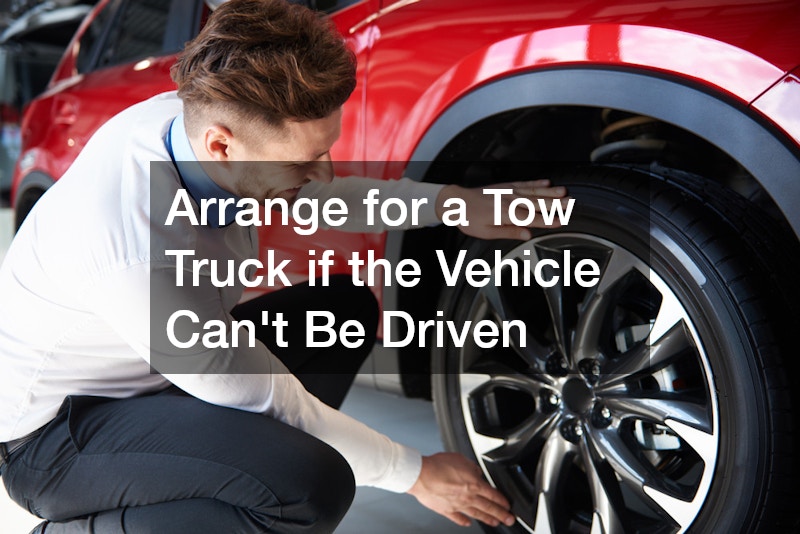
Following an incident, one must evaluate the vehicular integrity to determine whether it’s safe to drive from the scene. When car crash damage prevents mobility, contacting a local towing service is essential. This secures the vehicle’s safety and prevents further complications or potential hazards arising from immobility at the site of the accident.
Local towing services are equipped to transport your vehicle to preferred destinations, such as an auto repair shop or home, thus safeguarding against prolonged exposure on the roadside. They provide guidance on the subsequent steps and ensure the vehicle is moved in compliance with legal and safety concerns.
While awaiting the tow truck, ensure your vehicle is properly marked or positioned to prevent further collisions and to signal to other traffic. Utilizing local services is not only quick and efficient but also beneficial if further towing is covered under your auto insurance, reducing out-of-pocket expenditure.
7. Determine Whether You Should Invest in a New Vehicle
In the aftermath of significant car crash damage, contemplation regarding the viability of the vehicle is necessary. Assess repair versus replacement costs with professional advisors or auto accident attorneys, as severe damage may render a vehicle financially irreparable when juxtaposed against the acquisition of a replacement.
A practical approach involves soliciting quotes from automotive professionals who can accurately ascertain repair expenses. Options for procurement include local auction circuits, which often showcase a plethora of used vehicles, potentially offering fiscal advantages over repair dealings.
Selecting a new vehicle encompasses various considerations, including budget constraints, loan terms, and insurance premiums, making it imperative to scrutinize all aspects thoroughly. It’s vital to involve your insurer to understand how swapping vehicles might alter coverage needs and premium calculations.
8. Review Insurance Coverage for Repair Costs
A significant step in recovering from car crash damage involves an exhaustive review of your existing auto insurance coverage. This aids in determining deductible amounts and ascertains the encompassing range of expenses covered under your policy, subsequently shaping your repair strategy.
Understanding the nuances of insurance coverage is crucial, as certain stipulations might cover or exclude specific repair elements or conditions. Engage in discourse with your insurance agent to obtain clarity on covered amenities and potential out-of-pocket liabilities.
Knowledge of your insurance landscape empowers informed decision-making, assisting in the deliberation between costly repairs and alternative options, such as a new vehicle from a local auction. Tailor your repair approach accordingly, leveraging your auto insurance to mitigate financial burden.
9. Get a Professional Damage Assessment
An objective damage assessment conducted by auto body repair professionals ensures a comprehensive evaluation of the damage and informs subsequent action. Professional assessments delineate invisible impairments that might later escalate into substantial expenditures.
Such evaluations help formulate repair estimates and confirm alignment with what insurance appraisers might independently resolve, thus substantiating claims effectively. Harmony between your assessment and insurance findings can expedite claims processing, securing financial restitution promptly.
Professional insights provide a comprehensive breakdown of required repairs, inclusive of parts and labor costs, and prioritize urgent rectifications to prevent escalation of car crash damage. This allows you to forecast repair timelines and make alternate transportation arrangements if required.
10. Request Repair Estimates From Trusted Shops
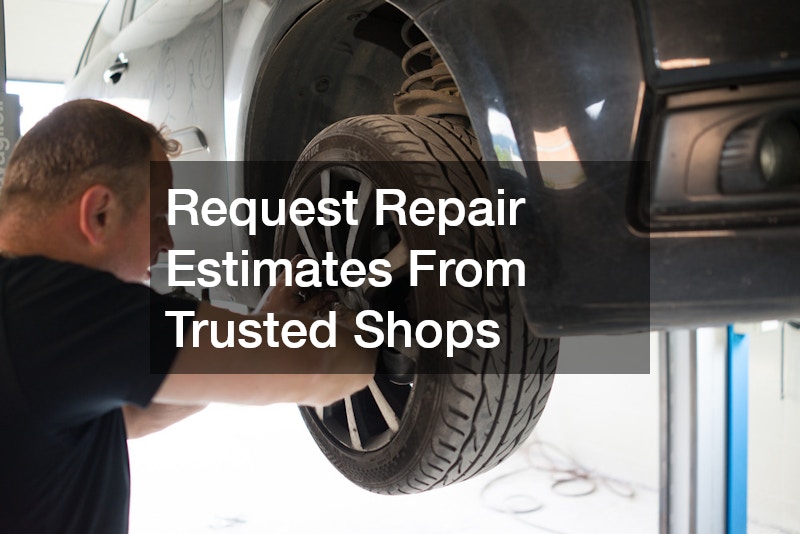
Once you have a damage assessment, solicit repair estimates from reputable auto repair shops to compare rates and services. It’s essential to gather multiple quotes to ensure you’re getting a fair offer consistent with industry standards.
Trusted workshops focus on restoring a vehicle’s pre-accident condition, utilizing quality parts and labor. Employ workshops familiar with handling insurance claims to foster smoother interactions between all stakeholders.
An array of estimates fortifies your standing when engaging insurers or contemplating out-of-pocket repairs, as transparently documented discrepancies between shops or exceedingly higher quotes can indicate variance in service quality or comprehensiveness.
Surviving a car crash incident involves maneuvering through a series of informed and well-judged actions. Knowing the immediate steps, from securing the accident scene to thoroughly understanding your insurance coverage, can significantly alleviate the challenges posed by car crash damage. By adhering to legal protocols and informed guidelines, one can effectively defend their interests, minimize financial losses, and expedite recovery processes. Whether enlisting a roadside assistance service or navigating decisions on vehicle repair versus replacement, each stage necessitates careful consideration and documentation. Keeping abreast of trusted resources like local towing services and reliable auto repair shops can aid in this endeavor. Ultimately, coupling proactive decision-making with professional advice, especially from accident lawyers and auto accident attorneys, ensures a comprehensive approach to managing the aftermath of collisions, transforming a likely overwhelming scenario into a manageable one. Proper preparedness, informed action, and allied professional support contribute to minimizing the physical, financial, and emotional toll of car crash damage, fostering swift and favorable resolutions.
